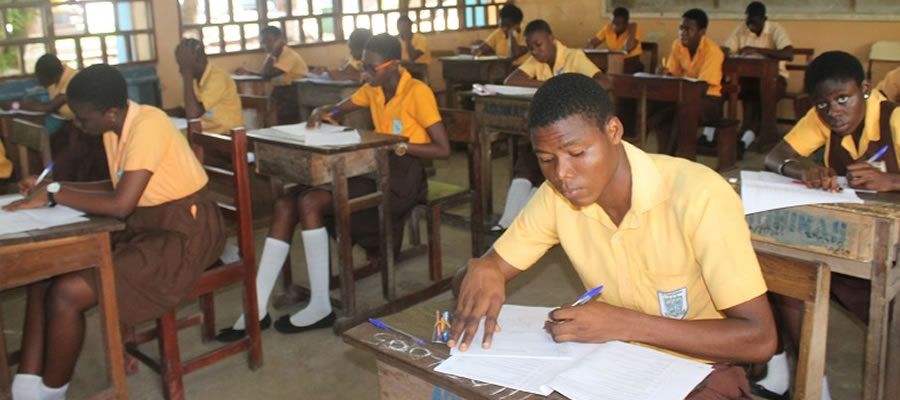

DISABILITY
Introduction
Persons with disabilities (PWD) are those who are unable to or are restricted in the performance of specific tasks/activities due to loss of function of some part of the body as a result of impairment or malformation (Ghana Statistical Service, 2012). As a result, PWDs face a wide range of life challenges because disability, in whatever form or type, can reduce an individual’s ability to function to his/her full potential. Disability can limit an individual’s full participation in a number of activities in life.
Estimates from the World Health Organisation (WHO) indicate that there are more than 600 million PWDs in the world, of which approximately 80 percent live in low-income countries (Ayiku, 2012).
In Ghana, PWDs in general are marginalized and suffer from discrimination on account of their disability status. They are mostly regarded as less productive and not capable of contributing to development compared to population with no disability.
Accordingly, they are often seen as a burden on society and their unfortunate circumstances are viewed sometimes as a curse or punishment. Furthermore, they have poorer health status, lower educational achievements, less economic participation and higher levels of poverty than people with no disabilities (World Health Organisation, 2011).
The inclusion of questions on disability in the 2010 PHC is therefore, paramount. The areas of disability discussed in this chapter are population with disability, types of disability, economic activity, education and literacy.
Population with Disability
Table 6.1 and Figure 6.1 show population with disability by type and sex in Tema metropolis in 2010. The proportion of persons with disability is 2.5 percent of the total population. A slightly higher proportion among female population has disability (2.5%) than that among male population (2.4%).
Types of Disability
Among the population with disability, sight disability is the commonest (39.1%), followed by physical disability (26.3%) and emotional disability (20.8%). The least disability among them is hearing (8.8%), followed by intellectual disability (11.6%). Among females with disability, higher proportions have sight disability (40.5%), physical disability (26.7%) and emotional disability (22.6%) than the proportions among males with disability (37.6%, 25.9% and 18.8%, respectively). Among males with disability, higher proportions have speech disability (17.4%) and intellectual disability (10.4%) than their female counterparts (11.3% and 10.4%, respectively).
Disability and Economic Activity
Table 6.2 shows the economically activity among persons with disability 15 years and older in the metropolis in 2010. About 56.9 percent are economically active (51.6 percent employed and 5.3 percent unemployed). The proportions employed by type of disability are higher than 50.0 percent except among those with physical disability and intellectual disability that the proportions employed are below 40.0 percent. Among males and females, the proportions of employed are similar to that of the metropolis as a whole; more than 50.0 percent of males and females are employed among the those with different types of disability except among those with physical and intellectual disabilities that the proportions are 40.3 percent and lower. Similar trends in proportions exist among males and females by type of disability.
The proportions of the economically not active population with disability are over 50.0 percent among those with physical (54.3%) and intellectual (53.7%), between 40.0 percent and 45.0 percent among those with hearing (44.6%), speech (43.3%) and sight (41.0%)disabilities, and below 40.0 percent among those with emotional (37.8%) and other disabilities (32.5%).
Disability, Education and Literacy
Educational status is generally low in the population 3 years and older with disability. Table 6.3 shows that those who have never attended school (both sexes) are 16.3 percent, the proportion is 11.4 percent among males and 20.6 percent among females. About 15.0 percent have primary school. Among males with disability, those with primary education are 13.6 percent compared with16.3 percent among their female counterparts. Those with disability who have higher levels of education, 6.6 percent have Bachelor’s degree, 5.7 percent have post-secondary/diploma, 6.2 percent have Vocational/Technical/Commercial education and 7.7 percent have Senior High School education.
Date Created : 11/24/2017 6:55:08 AM












 facebook
facebook
 twitter
twitter
 Youtube
Youtube
 +233 593 831 280
+233 593 831 280 0800 430 430
0800 430 430 GPS: GE-231-4383
GPS: GE-231-4383 info@ghanadistricts.com
info@ghanadistricts.com Box GP1044, Accra, Ghana
Box GP1044, Accra, Ghana